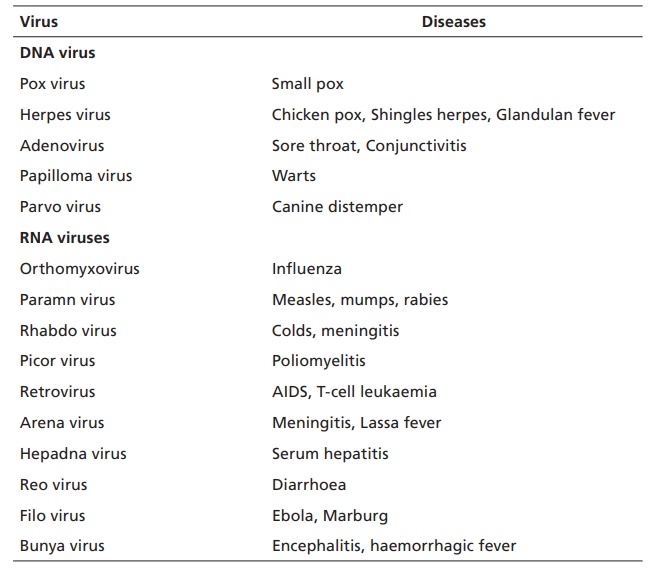Antiviral Agents
| Home | | Medicinal Chemistry |Chapter: Medicinal Chemistry : Antiviral Agents
Antiviral agents are substances used in the treatment and prophylaxis of diseases caused by viruses.
Antiviral Agents
INTRODUCTION
Antiviral
agents are substances used in the treatment and prophylaxis of diseases caused
by viruses. Viral diseases include influenza, rabies, yellow fever,
poliomyelitis, ornithosis, mumps, measles, ebola, human immuno deficiency virus
(HIV), herpes, warts, and small pox. Viruses are not proper living things, but
consists of a genome; they are smaller in size with simple chemical
composition, sometimes a few enzymes stored in a capsule made up of protein and
rarely covered with a lipid layer. The viruses only replicate within the host
cell and the viral replication depends primarily on the metabolic processes of
the invaded cell. Viruses does not possess cell wall, but they have RNA or DNA
enclosed in a shell of protein known as capsid. The capsid is composed of
several subunits known as capsomers. In certain cases, capsid may be surrounded
by an outer protein or lipoprotein envelope. One group of RNA virus that
deserves special mention are reteroviruses. They are responsible for acquired
immuno deficiency syndrome (AIDS) and T-leukaemias. Reteroviruses contain
reverse transcriptase (RT) enzyme activity that makes a DNA copy of the viral
RNA template. Then, the DNA copy is integrated into the host genome, at which
it is referred to as provirus and is transcribed into both the genomic RNA and
mRNA for translocation into the viral proteins, giving generation to new virus
particles. Viral life cycle varies according to the species, but they all share
a general pattern that can be sequenced as follows (Fig. 7.1):

·Adsorption: Attachment of the virus to the host cell.
·Penetration:
Penetration of virus into the
cell.
·Uncoating: The genetic material or viral genome (DNA or
RNA) passes into the host cell leaving the capsid covering outside the host cell.
·Transcription:
Production of the viral mRNA
from the viral genome.
·Translation:
The viral genome enters the
cytoplasm or the nucleoplasma and directs or utilizes the host nucleic acid
machinery for the synthesis of the new viral protein and for the production of
more viral genome. The viral protein modifies the host cell and allows the viral
genome to replicate by using host and viral enzyme. This is often the stage at
which the cell is irreversibly modified and eventually killed.
·Assembly of
the viral particle: New viral
coat protein assembles into capsid and viral genomes.
·Release of the mature virus from the cell and
the budding process or rupture of the cell and repeat of the process, in a
fresh host cell.
Since the
host cell machinery is totally utilized for the production of new virions, the
normal cell function is affected. Antiviral agents have been developed to act
at various stages in the viral replication cycle, such as attachments,
replication, and release of the virus.
Some virus
types together with diseases that they cause are listed in Table 7.1.
Table 7.1 Examples of viruses with diseases.

